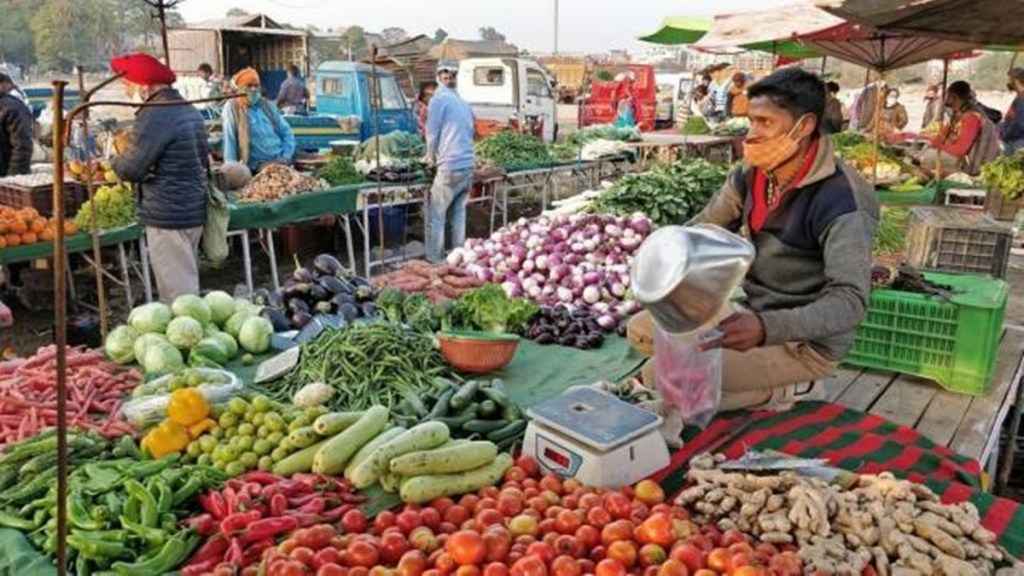India’s retail inflation easing to an 18-month low of 4.70 per cent in April on an annual basis as against 5.66 per cent in March will support Reserve Bank of India’s (RBI) decision to maintain a rate pause stance, said economists. “The RBI will see this print favourably and remain on a pause in the June policy while maintaining a cautious outlook on inflation. We continue to pencil in the repo rate to remain unchanged for an extended period subject to global growth prospects, central bank actions, and domestic growth prospects,” said Suvodeep Rakshit, Senior Economist, Kotak Institutional Equities.
“This news brings relief to the central bank, which had maintained key interest rates unchanged in its recent policy review following consecutive hikes. March marked the first month in the current year where India witnessed a retail inflation reading below the upper tolerance limit of 6 per cent set by the RBI,” said Ashish Aggarwal, Managing Director, Acube Ventures Global Private Limited.
In line with analysts’ expectations, this was for the second month in a row that Consumer Price Index (CPI) based inflation remained with the RBI’s comfort zone of below 6 per cent. Retail inflation in April is the lowest since October 2021 when it was at 4.48 per cent. “For now, we expect the MPC to maintain a pause as it continues to watch the impact of past rate hikes. As growth slowdown seeps in and inflation moderates, we expect the RBI to cut rates by the end of this fiscal,” said Dharmakirti Joshi, Chief Economist, CRISIL. CPI inflation is expected to average 5 per cent this fiscal on the assumption of a normal monsoon, he said while adding, “A high base should favour inflation rates for another month or two.”
What helped easing CPI inflation?
April CPI inflation at 4.7 per cent benefitted from a favourable base effect as well as cooler than normal temperatures which delayed the price of perishable goods. The drop in April retail inflation was also on account of a drop in food prices. The food price inflation dropped to 3.84 per cent, compared to 4.79 per cent in March, according to data released by the National Statistical Office (NSO). “Inflation moderated to sub 5 per cent in April 2023 primarily supported by a high base and softening of vegetable prices and energy prices. When measured sequentially, the consumer inflation has inched up by 0.5 per cent,” said Vivek Rathi, Director Research, Knight Frank India.
According to CRISIL’s Dharmakirti Joshi, “A considerable part of the fall is due to a high-base effect of last year when the Russia-Ukraine conflict intensified, pushing up fuel, metal, and food prices. Correcting for seasonal elements, there is perceptible sequential easing across most categories except pulses, sugar, spices, education and personal care and effects.” Meanwhile, he stated another noticeable aspect which is the still-elevated inflation rates in cereal (at 13.7 per cent), milk (8.8 per cent) and pulses (5.3 per cent). While the rabi harvest entering the market could bring some respite for cereal and pulses prices, the looming El Nino and monsoon threat is cause of worry. Also, high procurement prices are expected to keep the milk inflation high, subsequently continuing to pinch pockets. On the same lines, Vivek Rathi pointed out that the price pressure on the households will continue to remain sticky in the near term also with producers/manufacturers yet to pass on the wholesale price reductions to the consumers to maintain their profit margin in the current high-cost environment.
Lower inflation + Weak IIP = No rate hike in Jun’23
India’s Industrial production growth slipped to a five-month low of 1.1 per cent in March from 5.8 per cent in February 2023 mainly due to poor performance of power and manufacturing sectors, according to data released by the Ministry of Statistics and Programme Implementation. This, along with low inflation rate, calls for the central bank to maintain a pause in the next MPC meeting, said Nikhil Gupta, Chief Economist, MOFSL Group. “IIP came in at just 1.1 per cent YoY in March 2023, much weaker than the market (and our) forecast of ~3.8 per cent, putting some downward pressure on 4QFY23 GDP. Consequently, there is no reason to expect another rate hike by the RBI next month or beyond that,” he said.
IIP growth decelerated to 1.1 per cent on-year, driven by slowing manufacturing, and falling electricity production. Within manufacturing, the sharpest fall was seen in consumer durables (-8.4% vs -4.1%), followed by consumer non-durables (-3.1% vs 12.1%). Consumer durables declined consistently for the past 4 months, largely indicating hit from falling exports, and some impact of rising interest rates on domestic demand.
Further, support from infrastructure activity also seemed to wane towards the end of the fiscal as infrastructure/construction goods posted a growth of 5.4 per cent compared to a 6.7 per cent expansion in the same period a year ago. “This should reverse as the central government restarts capex push from the new fiscal,” said Dharmakirti Joshi. He added that the industrial growth will likely to continue facing headwinds with moderating domestic demand and external demand is expected to be a bigger drag, even as rising interest rates will moderate domestic demand. The key monitorable for India currently will be the monsoon, and how it impacts rural income prospects. “Overall, we expect India’s GDP growth to slow to 6.0 per cent in fiscal 2024 from 7.0 per cent previous year,” concluded Dharmakirti Joshi.

